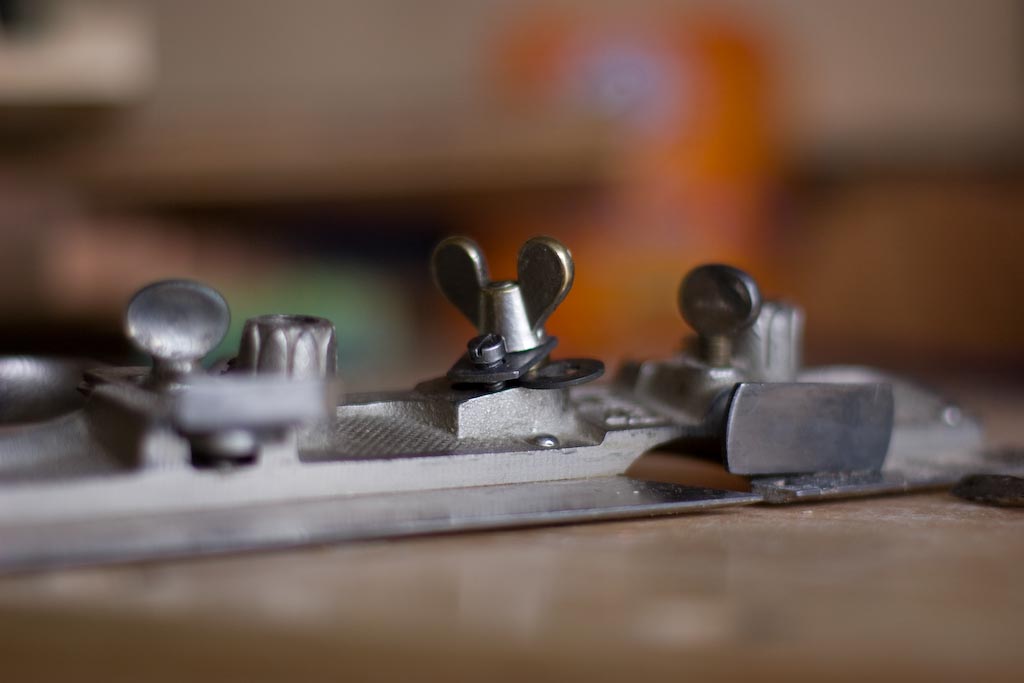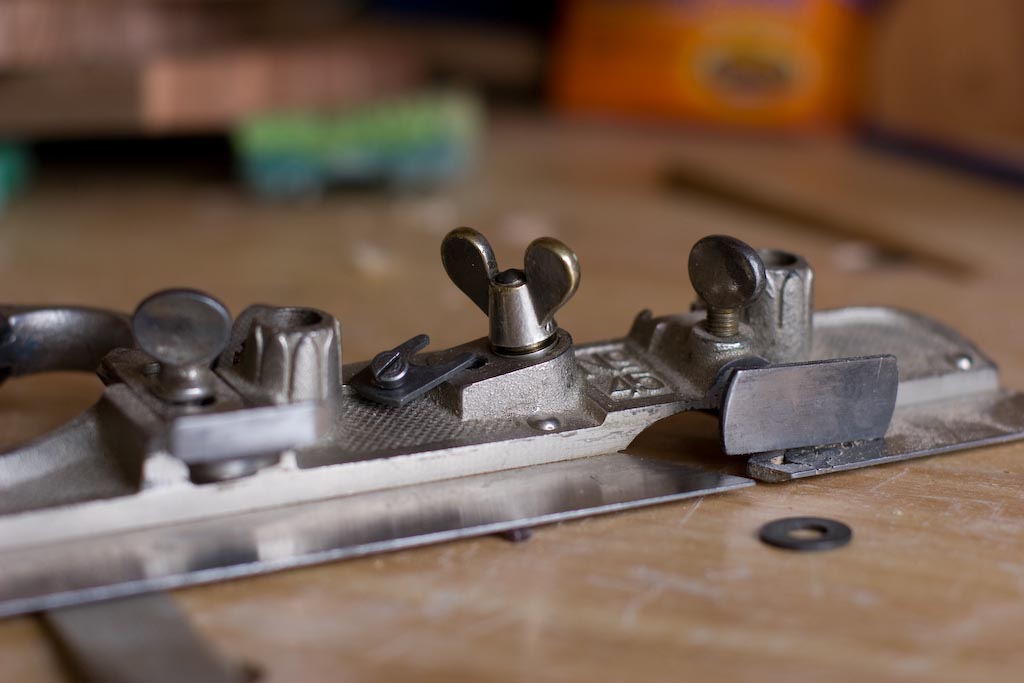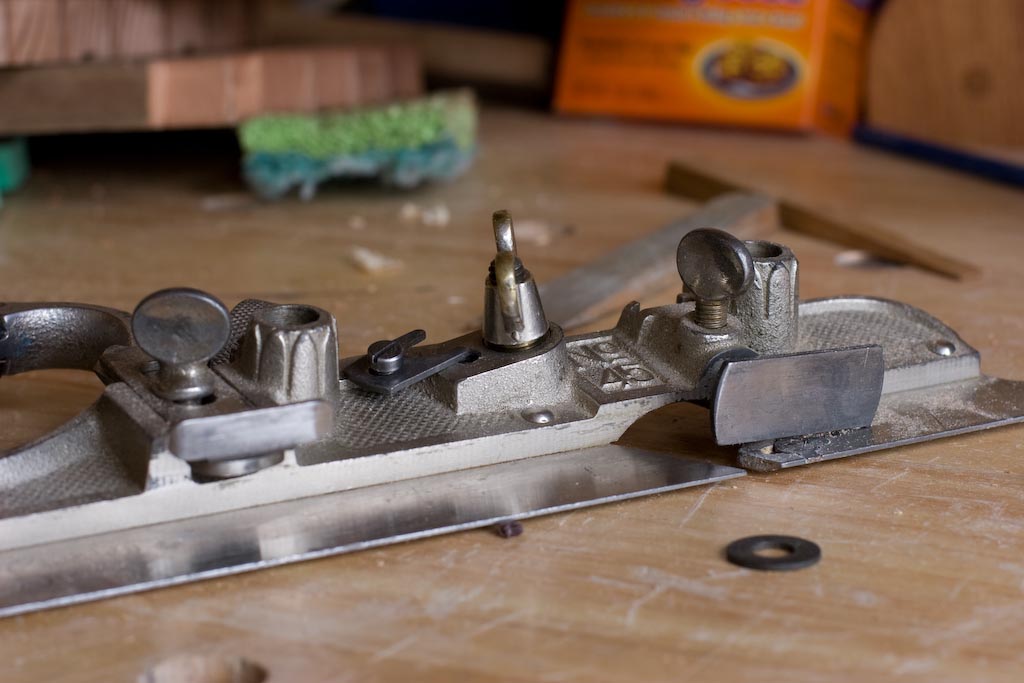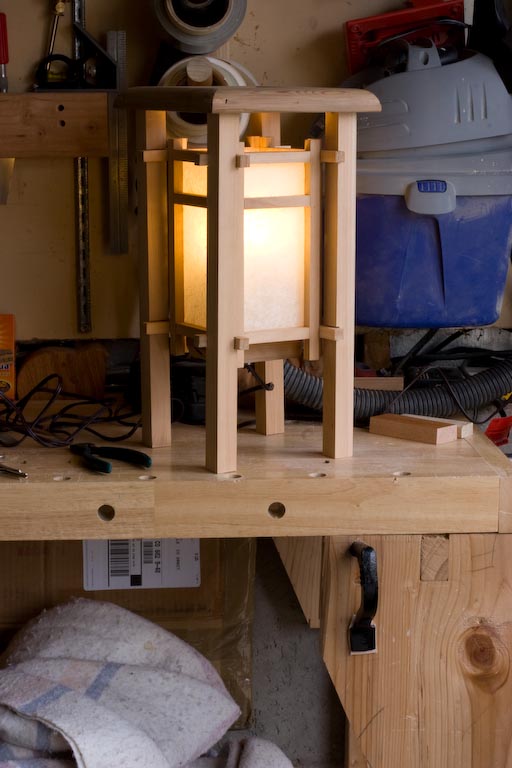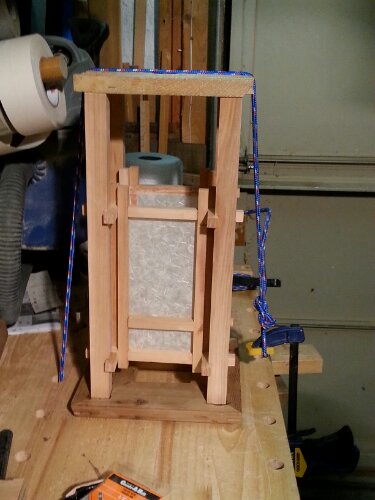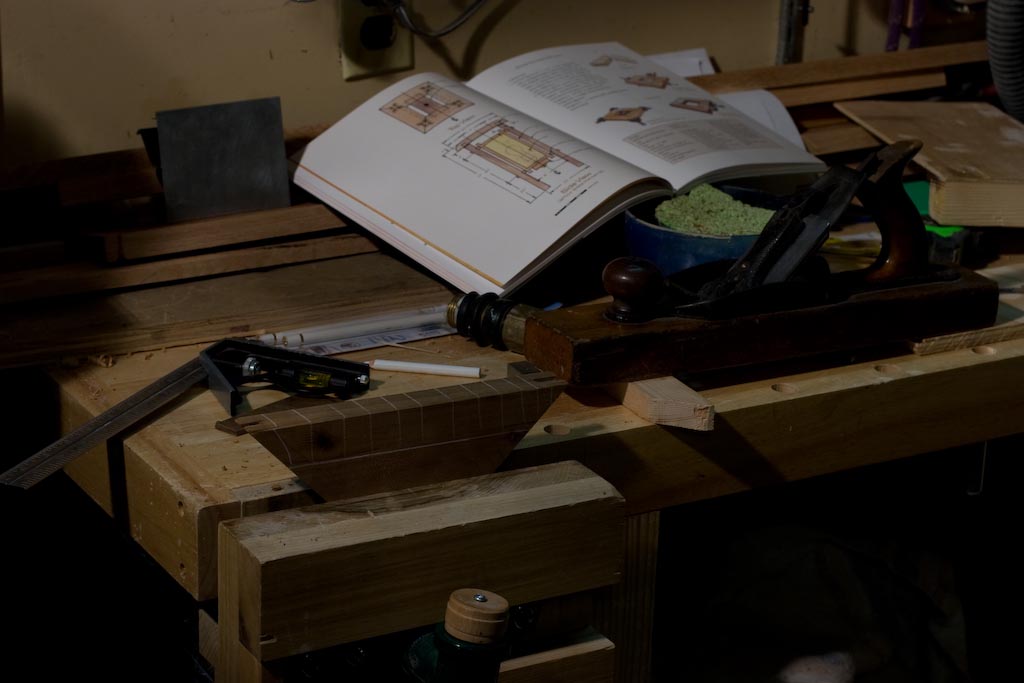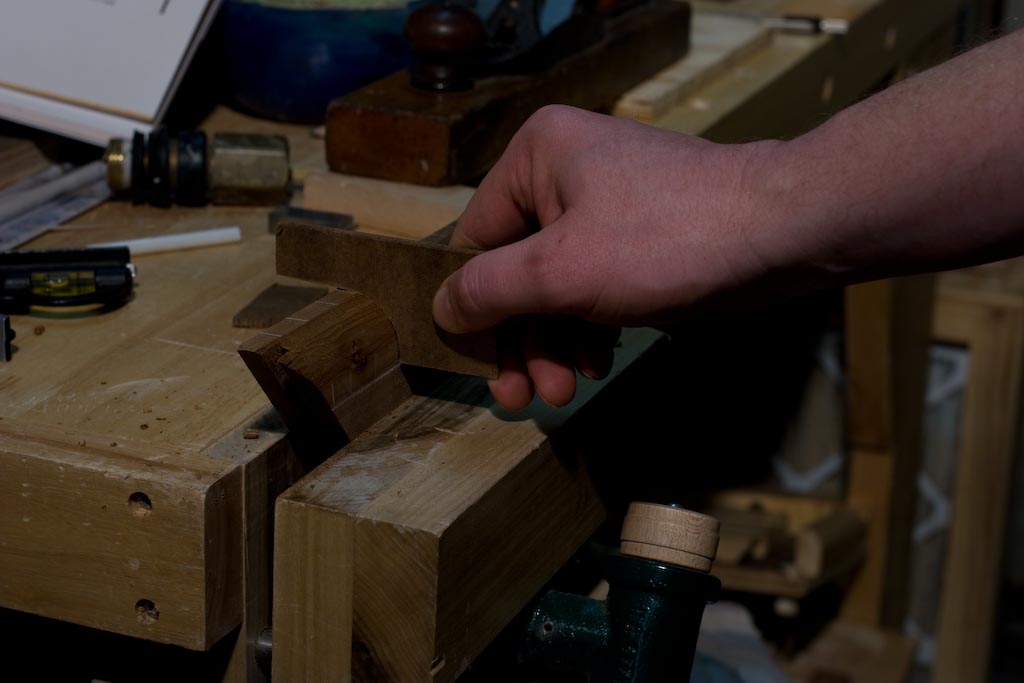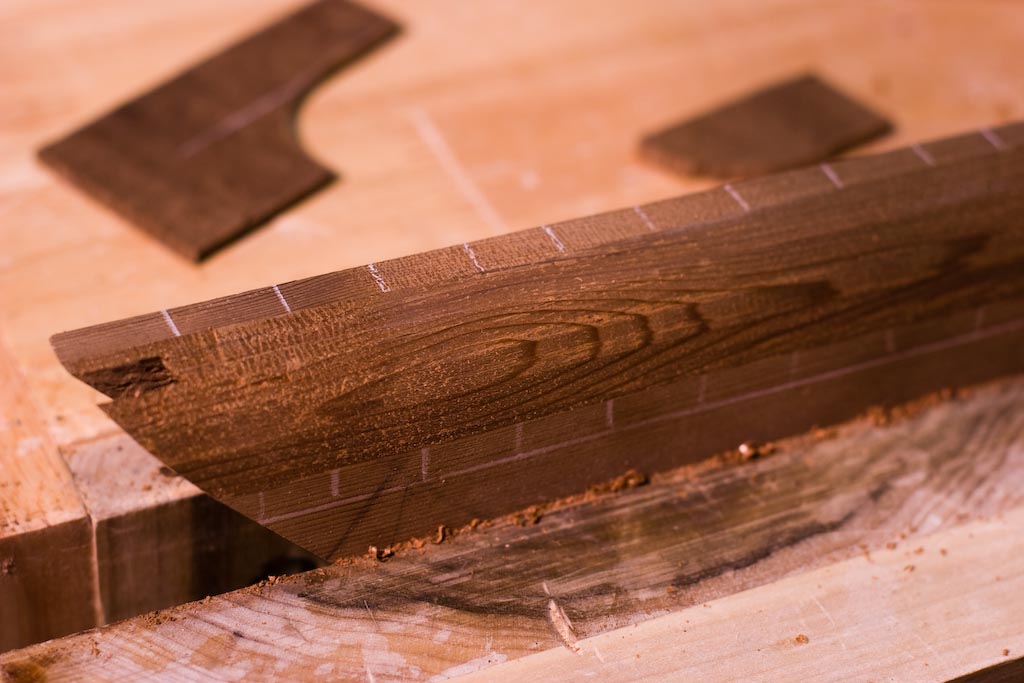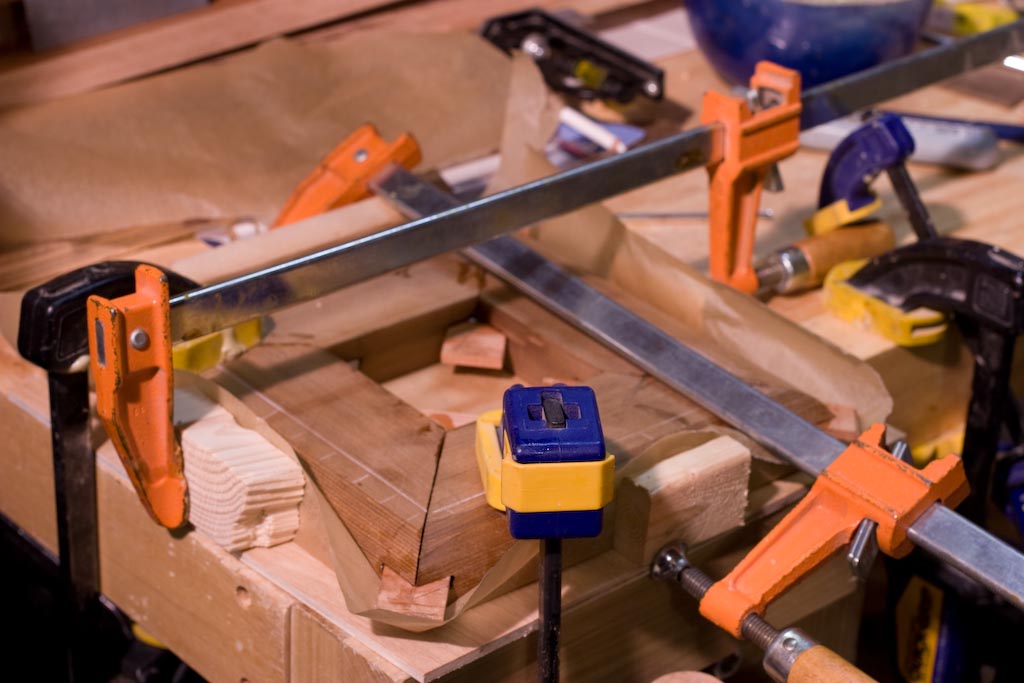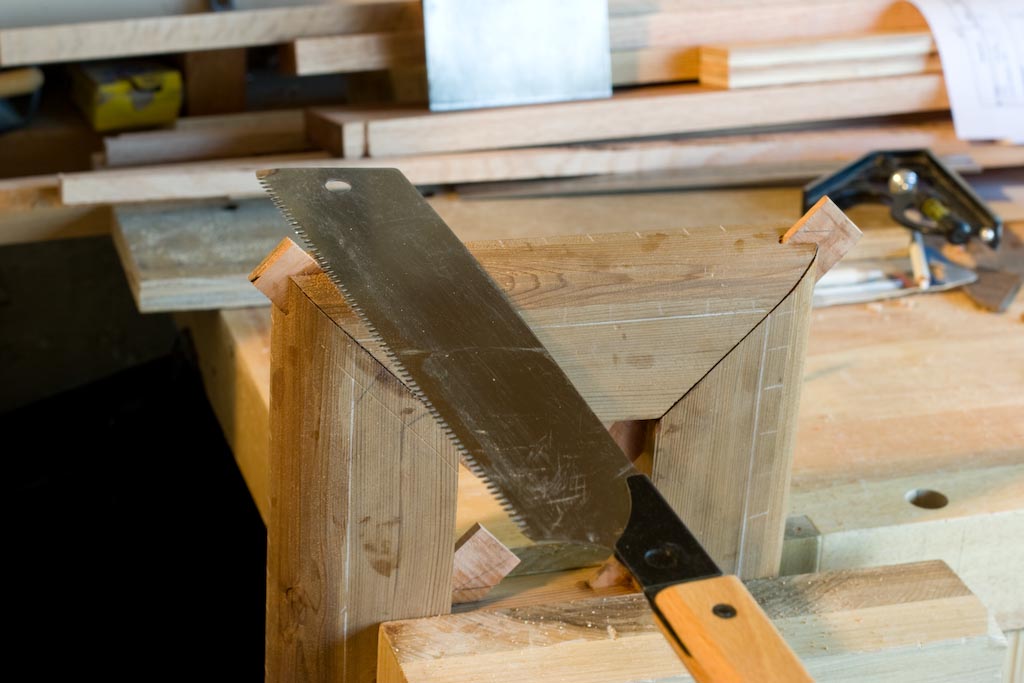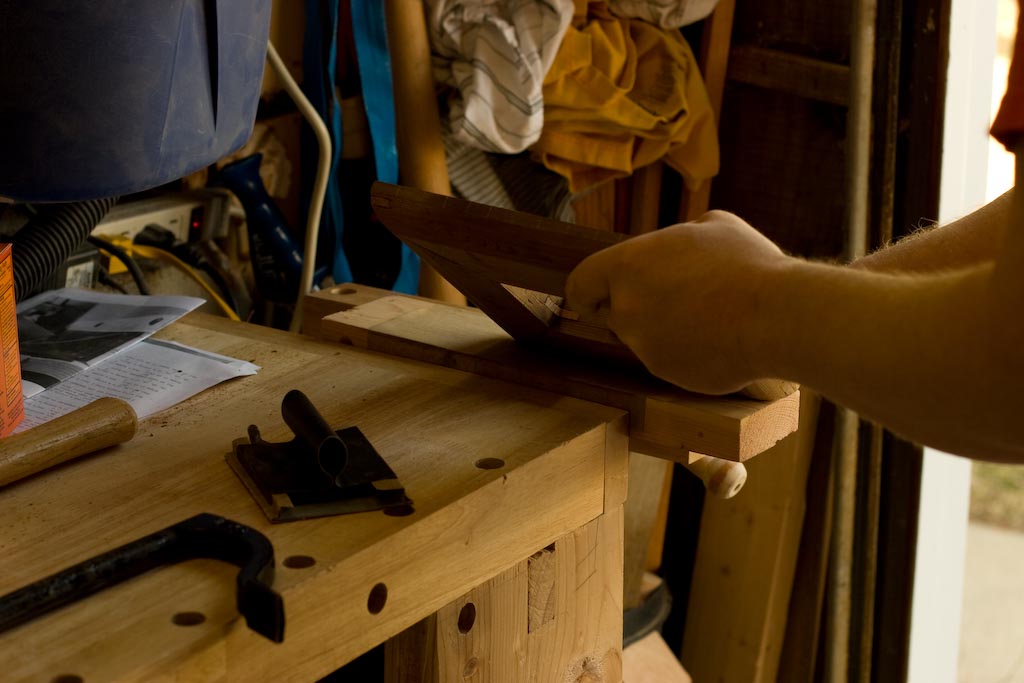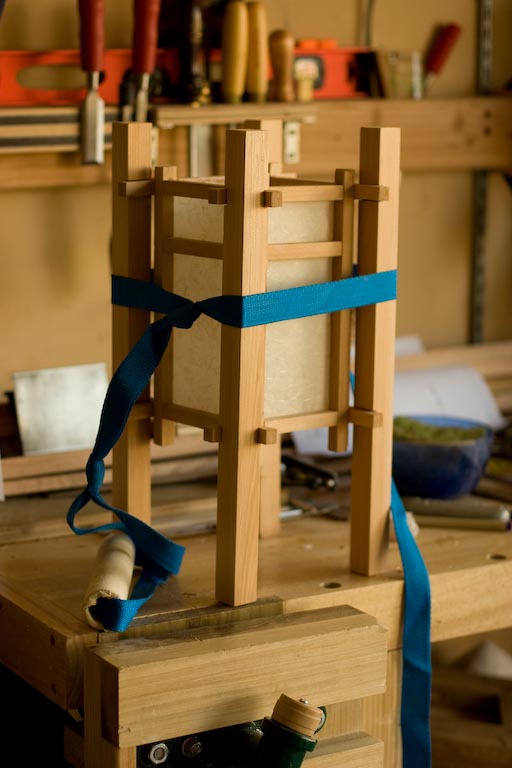This has been over a year long struggle – why won’t screw for the retainer for the blade tightener on the plow plane stay in place?
At first I thought that the screw had previously broken (you never know with these craig’s list specials). So, then I tried to go to the box store and even McGukin’s (one of the most complete hardware stores I’ve ever seen) to get a new, longer, screw. No dice. Turns out that Stanley designed in a 10-30 screw, which no one has make for a long time – probably since the 1940’s or 1960’s. There is a guy at McGukin’s that will make you custom screws on his lathe, but I figured I should be able to find a replacement screw online.
After a bit of poking around, I was able to order one online. However, at first the wrong screw got sent, but Bob Kaune was nice enough to send the correct one free of charge. Yay! So, the proper screw arrives, and it is the same length. Crap. So, I try it thinking that maybe the original one was just stripped or something – after all, there is only a little over 1 thread engaged.
In the photo below, the screw through the little metal retaining clip is the one I’m talking about. I have it carefully stages so that the amount of thread above the space is about all that was engaged, when I purchased the plane.
Plow plane sits in the box for over a year, while I ponder my next steps.
Today, I decide to get a custom screw made by the guy at McGukin’s. So, I take out the plane and remove the screw, so I can give it to the guy, so he has a model, and I can tell him to just make it twice as long. To make it easy on myself, I completely removed the wing nut, and the washer below it fell off in the process. Hmm, I say to myself, “what is this depression in the plane?”
Turns out that somebody had put this washer in the way, so that the wing nut would not sit in its milled spot. You can see the problem washer wedged under the spacer in the above photo.
This washer caused 2 problems. 1) it made for the need of a longer screw. 2) it made the retainer clip sit at an angle.
Below the wing nut is shown, just barely out of its socket.
Here it is again, fully in its socket.
So, now the retaining clip will sit fully engaged with the outer surface of the plane body, and the screw is the perfect length. The offending washer (shown off to the right) has been stored in the box – just in case is has some other mysterious purpose.
Russ
